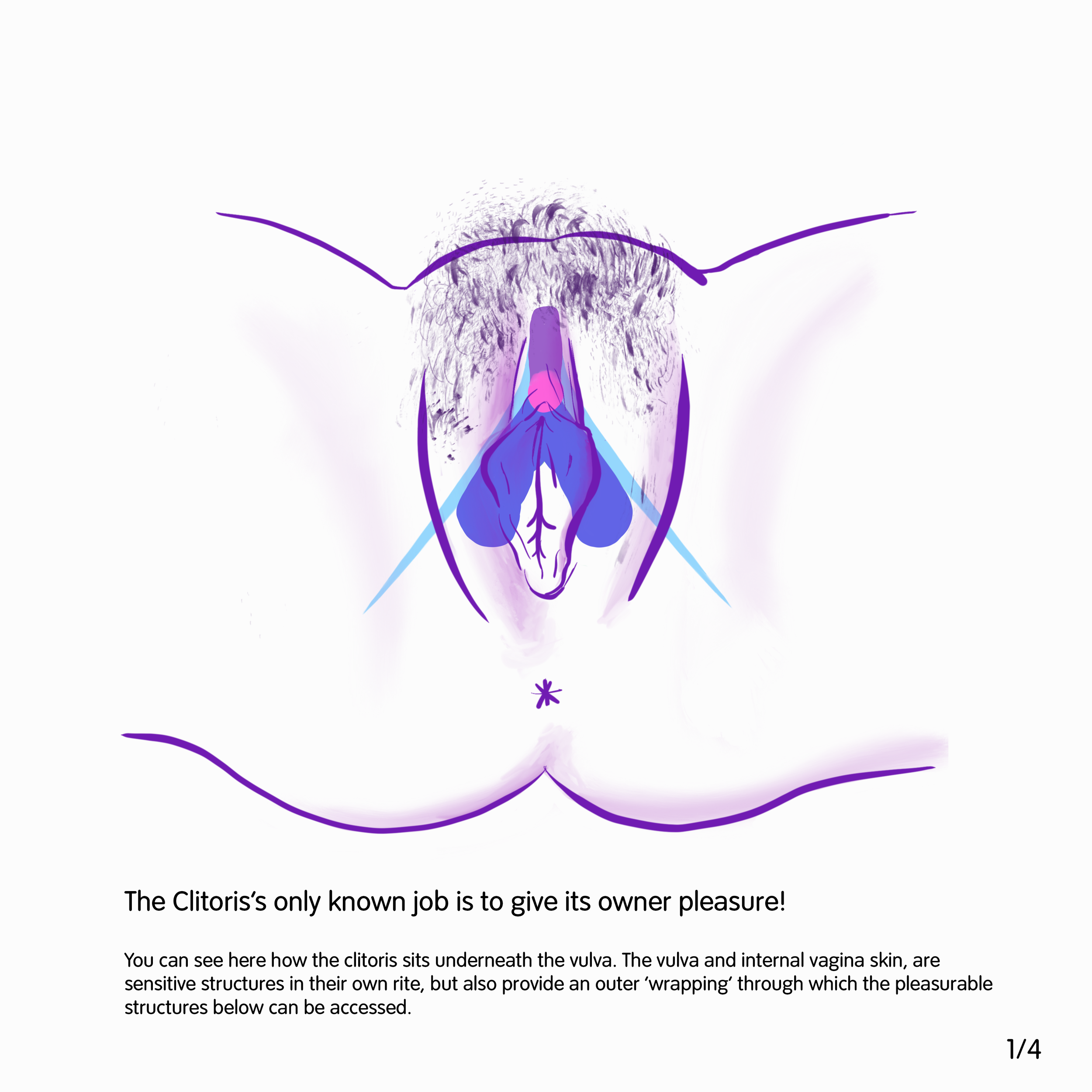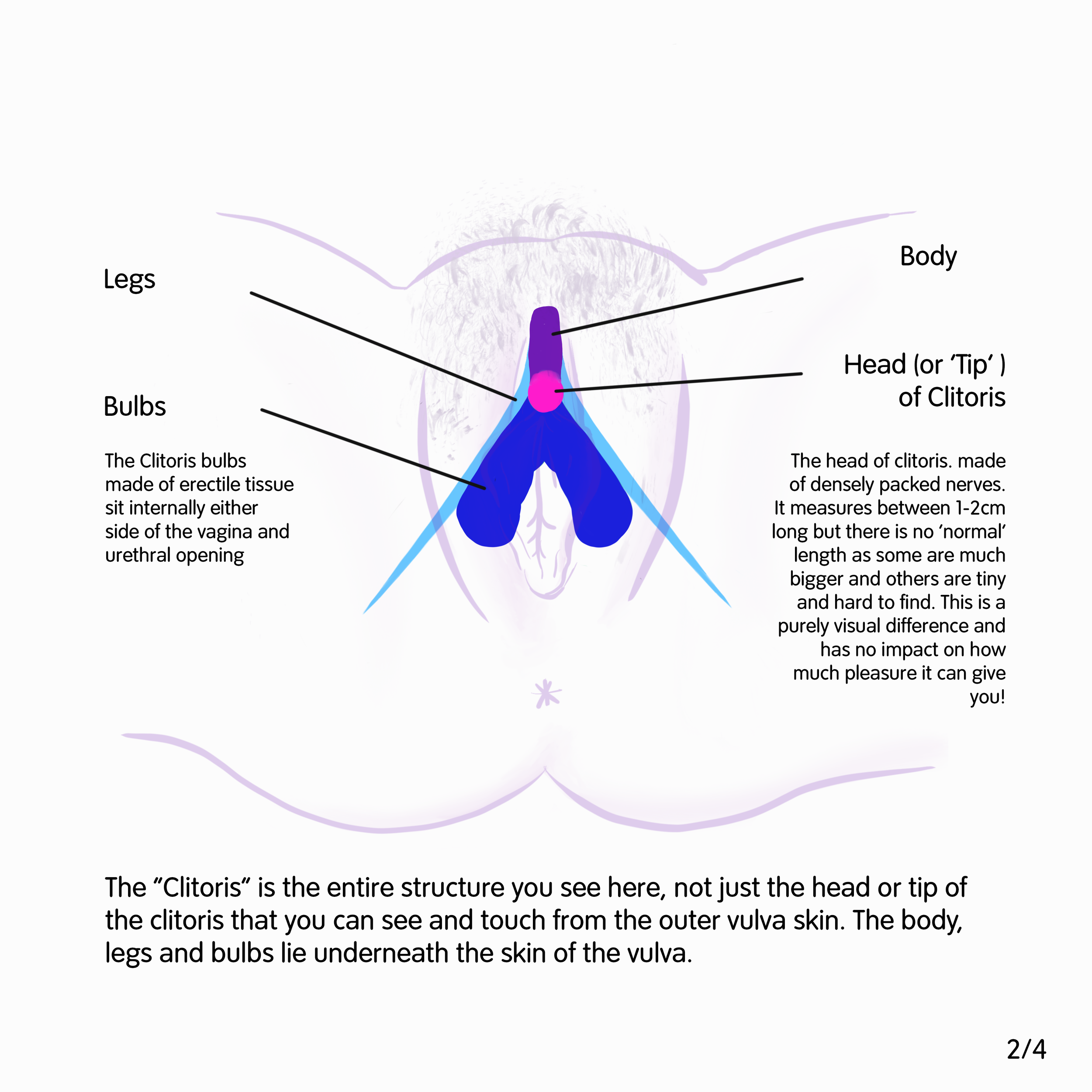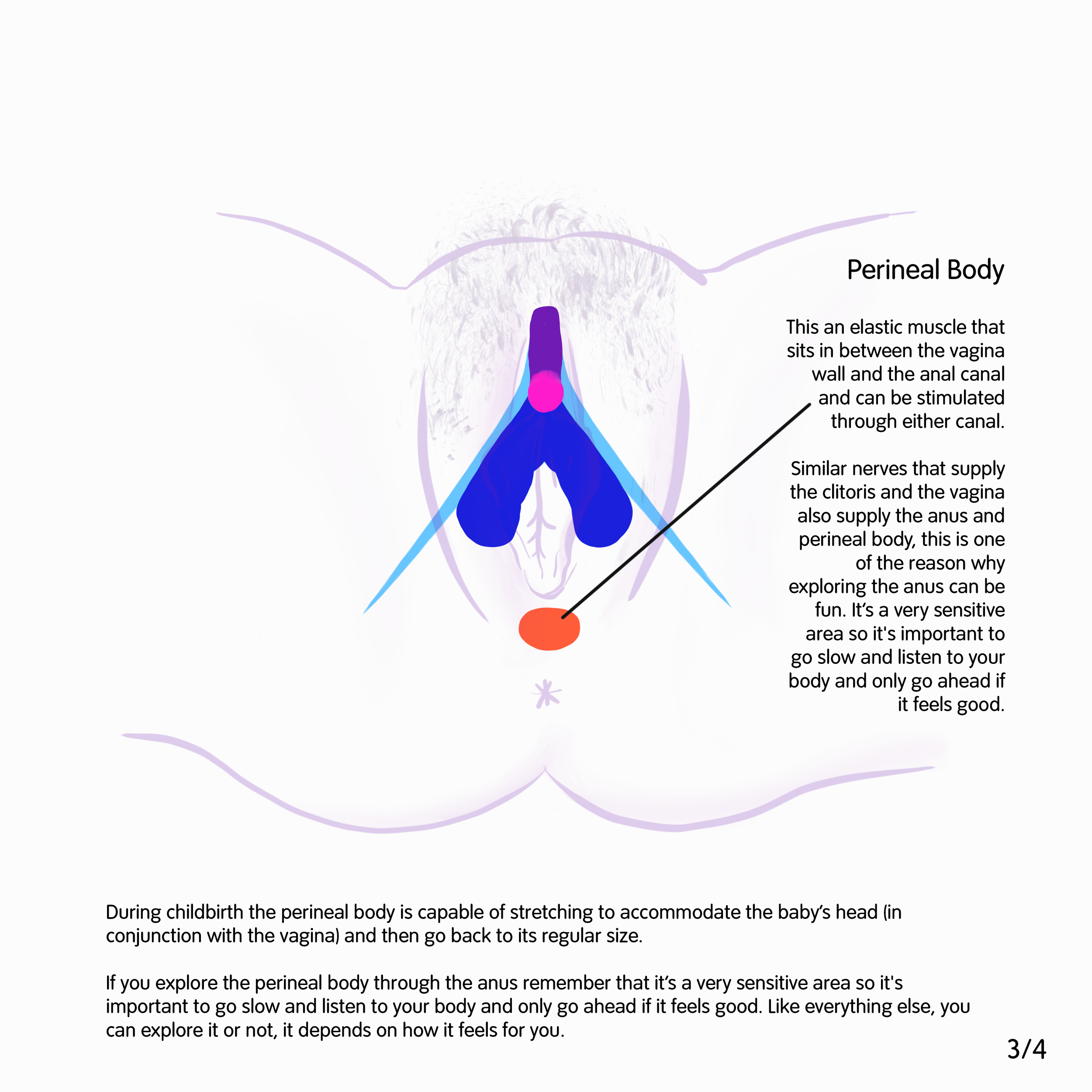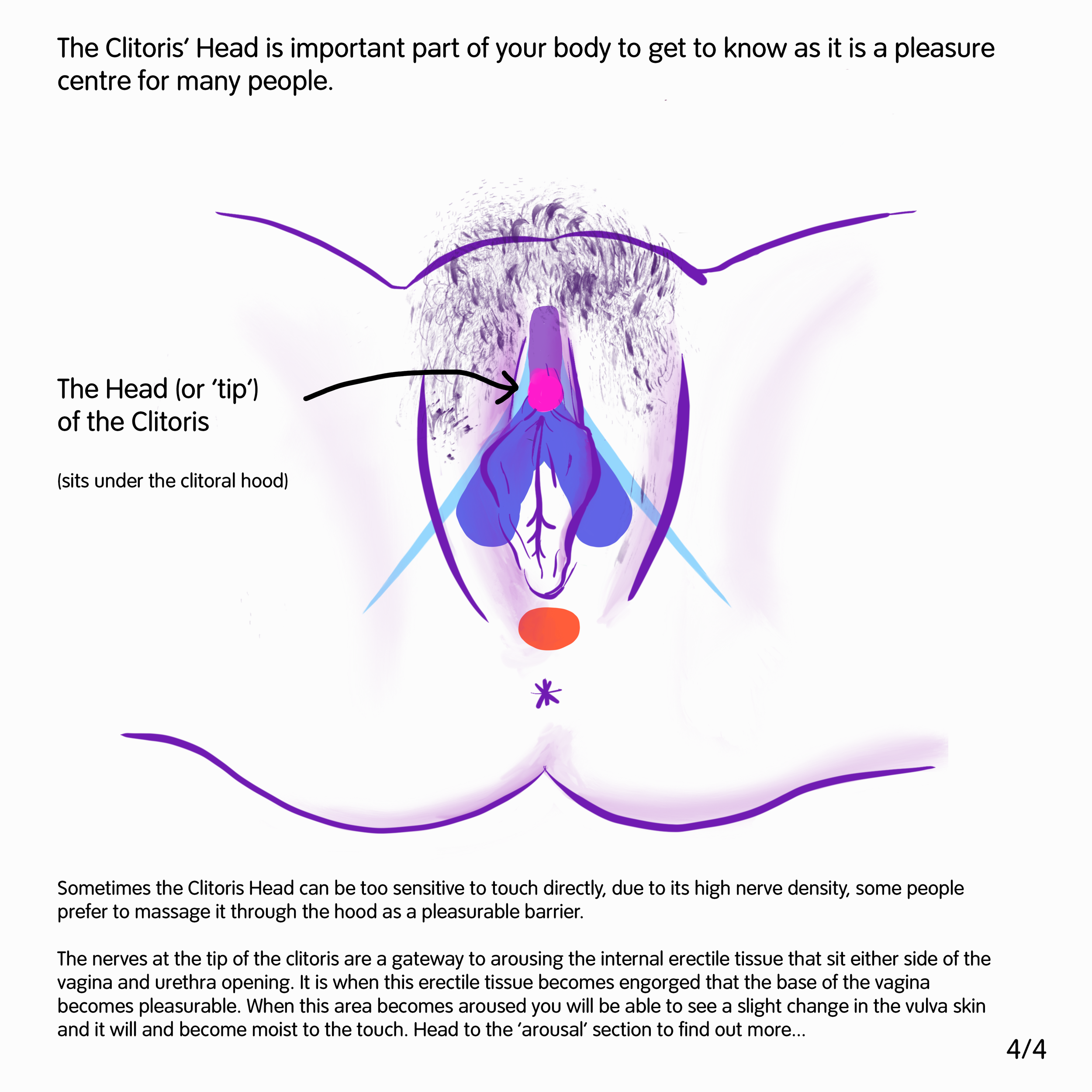The Clitoral Bulbs
The complete clitoris is about 9-11 cm long and is made up of the ‘head’ (pink), body (purple), legs (light blue) and bulbs (dark blue), and has a kind of ‘erection’ when its aroused.
The glans or ‘head’ of the clitoris is made of densely packed nerves and is external, which is what you can see and touch in the vulva.
The body, legs and bulbs of the Clitoris are internal and are made up of Erectile tissue.
The clitoral bulbs that sit either side of the vagina and urethra, as you can see below are responsible for a lot of pleasure, they are usually stroked or stimulated through the inside of the bottom of the vagina. This is one of the reasons why penetration can feel good as the clitoral bulbs are made of erectile tissue and on arousal they engorge, becoming bigger and more sensitive, allowing for pleasure.
Recap:
Erectile tissue: a type of tissue that, when blood flows into it, it doesn’t flow out, but instead holds on to the blood, causing the area to swell up. When you start to feel turned on or excited, blood flow in the genitals increases and the clitoris in particular swells and has a kind of ‘erection’ that is similar to the penis.
Click ‘play’ and explore the 3D model below...



